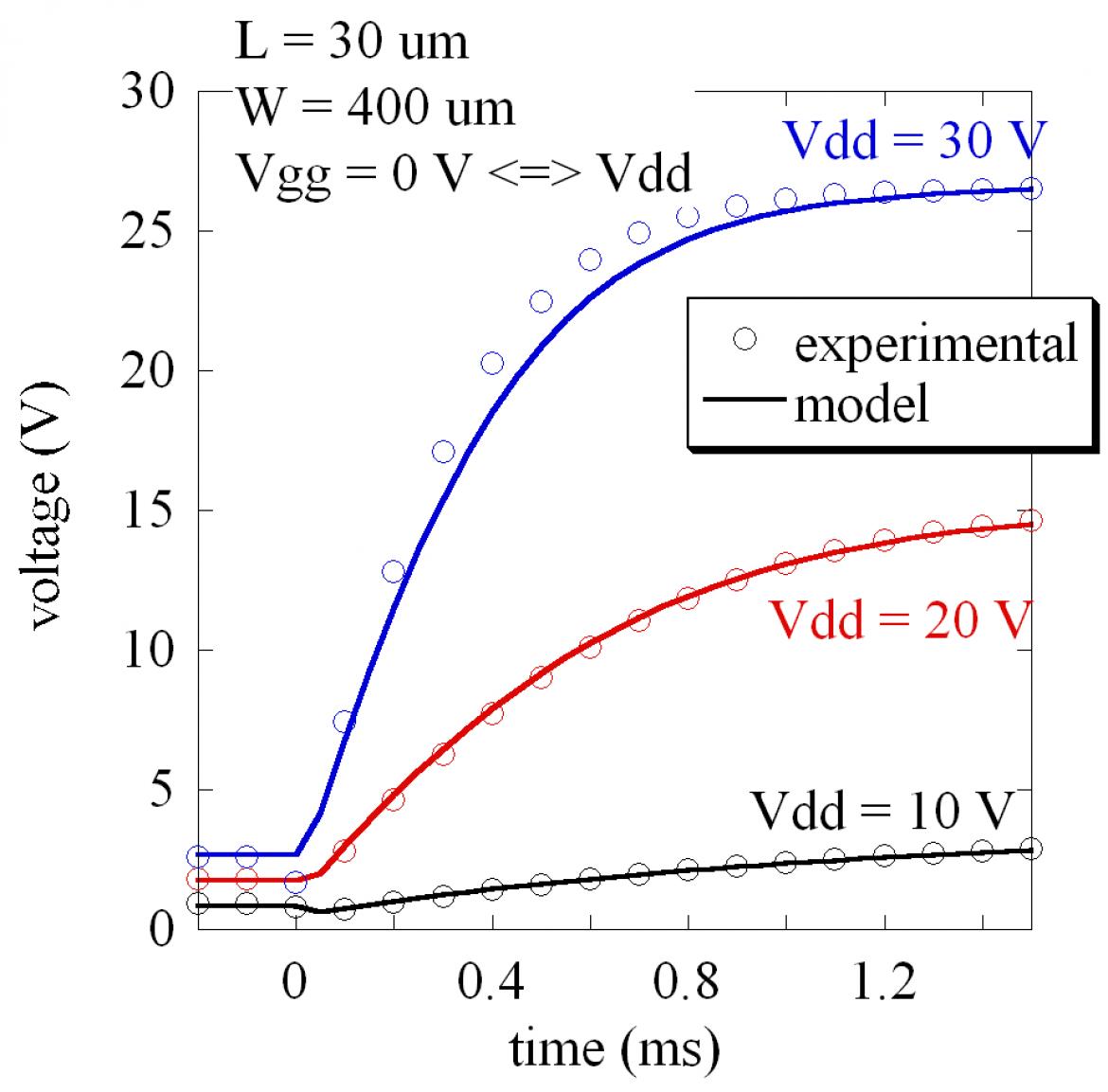
Organic electronics is one of the technologies that is believed that will play a major role in the forthcoming “Internet of Things” scenario. Despite the low performances of the devices realized with today’s technologies, compared to their silicon counterparts, there are several major advantages of organic electronics over traditional techniques. The very low production costs, the possibility to achieve mass production by using printing techniques, the feasibility of organic circuits on flexible substrates makes organic electronics a very promising technology.
This activity is dedicated to the modeling of Organic Thin-Film-Transistors (OTFTs): starting with a thorough understanding of the basic physics of the device (carrier transport, contact effects), a compact model able to reproduce the behavior of the device in all their operation regimes, in both static and dynamic conditions, will be developed. In particular, the presence of contact effects and the operation in non-quasi-static regime even at low frequencies will be addressed by the compact model.
Collaborations: Andrea Fabbri, Paolo Branchini - INFN Sez. RomaTRE
Reference Persons: antonio.valletta@imm.cnr.it , matteo.rapisarda@imm.cnr.it , luigi.mariucci@imm.cnr.it
Active Projects: Joint bilateral collaboration project CNR-CINVESTAV (Mexico)
Publications
- A. Valletta, A. Daami, M. Benwadih, R. Coppard, G. Fortunato, M. Rapisarda, et al., "Contact effects in high performance fully printed p-channel organic thin film transistors," Applied Physics Letters, vol. 99, Dec 5 2011
- A. Valletta, M. Rapisarda, S. Calvi, G. Fortunato, M. Frasca, G. Maira, et al., "A DC and small signal AC model for organic thin film transistors including contact effects and non quasi static regime," Organic Electronics, vol. 41, pp. 345-354, Feb 2017.
- A. Valletta, M. Rapisarda, S. Calvi, L. Mariucci, and G. Fortunato, "A Large Signal Non Quasi Static Compact Model for Printed Organic Thin Film Transistors," 2016 46th European Solid-State Device Research Conference (ESSDERC), pp. 460-463, 2016

